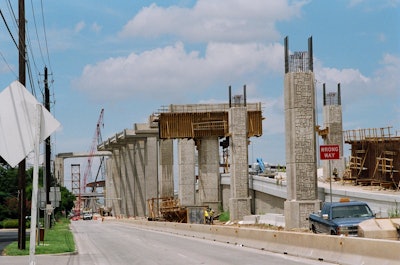
In this second of a two-part series on the state of the construction industry, we asked leading industry economists to comment on the market potential for the transportation sector, with a specific focus on the effects the industry may see from passage of the first long-term highway bill in nearly a decade. Following are their insights on the impacts of the 5-year funding authorization.
ET: Do you foresee a healthy highway construction market in 2016 and how might it compare to 2015?
Ken Simonson, chief economist, Associated General Contractors of America (AGC): With the enactment, at last, of a long-term federal highway funding bill that contains additional revenue, there should be a modest uptick in highway construction spending in 2016. In addition, the list of states that have increased their gas taxes or other highway funding mechanisms keeps growing. Many of these provisions will have contributed enough to state coffers to allow a further increase in contract awards in 2016.
Jeannine Cataldi, IHS: Spending on highway and bridge construction strengthened in 2015 and is on track to finish the year above 2014 levels. Growth in this market will remain healthy in 2016 as revenues at the state and local level continue to benefit from increased job and wage growth. The residential market will provide an additional lift to this segment with an increasing number of housing starts creating a need for the upgrade of existing roads, as well as construction of new roads for new housing developments.
The recent passage of the Fixing America’s Surface Transportation (FAST) Act has removed a measure of uncertainty for the highway/streets construction market. The five-year bill will allow for long-term planning, which was difficult under the multiple short-term extensions of the last decade. The five-year authorization is likely to lead to stronger growth of highway/street construction over the coming years.
Anirban Basu, chief economist, Associated Builders and Contractors (ABC): I see additional progress ahead. Much of this relates to healthier state and local government budgets, which have helped to increase the level of investment in roads, bridges and highways generally. The new speaker of the U.S. House of Representatives will help secure a more stable future for the federal Highway Trust Fund, which should also induce more heads of state departments of transportation to move projects along.
Dr. Alison Premo Black, senior vice president and chief economist, American Road and Transportation Association (ARTBA): The multi-year federal transportation bill will provide much-needed stability for the highway, bridge and transit markets after a decade of short-term extensions. The modest increase in federal highway and bridge investment in 2016 will help the program keep pace with changes in inflation, materials and project costs. Federal funding accounts for an average of 52% of state department of transportation capital outlays for highway and bridge improvements.
The highway and bridge construction market is expected to be uneven across the country, with programs growing in 23 states and Washington, D.C., and remaining flat in nine states. A number of states have increased their own funding in the last few years, including 15 that have raised their own gas taxes for transportation investment since 2013. Overall, states approved 30 legislative measures in 2015 to increase investment, while voters approved 68% of the ballot measures for transportation funding.
Outside of construction, state and local governments are expected to spend an additional $42 billion for maintenance work, $14.8 billion for in-house and consultant planning and design services and $7.8 billion for right-of-way purchases as part of their highway and bridge programs.
Our project cost index indicated overall increases in project costs in 2015 were below historical averages, but I would expect to see increases in the range of 2% to 3% next year as work and demand for material and labor increase in transportation and general construction. Three percent is the historical average.
Ed Sullivan, group vice president and chief economist, Portland Cement Association (PCA): Highway construction improved last year in large part because of state and local funding. In 2016, the new highway bill will have a positive effect, and we project a 5% increase in highway construction.
But the bill is not a game changer. Congress won’t touch the gas tax, hence $70 billion dollars will come out of the general fund over the 5-year program, which makes it very susceptible to any economic blip. Furthermore, it is projected that 20 years from now, there will be another 40 million drivers on our highways. The industry still needs a long-term fix.















